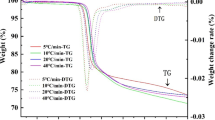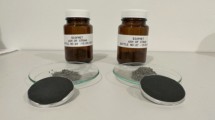Abstract
The surface characteristics of rolled aluminum products such as sheets and foils are strongly affected by the particular rolling process and the type of aluminum rolling oil compositions. After the rolling process, coiled aluminum sheets and foils undergoes annealing to form desired crystal structure and remove the rolling oil residues. Depending on the time and the temperature that rolled aluminum exposed for annealing, rolling oil residues are mostly removed from the coiled aluminum products but if there is any contamination in rolling oil due to hydraulic and gearing parts of the rolling systems these heavier oils are not easily evaporates from the aluminum surfaces especially inner parts of the coiled aluminum sheets and foils. These rolling oil contaminants create serious problems for the some specific applications of these aluminum products in certain industries such as automotive and coating as remaining thin oil layer prevents proper painting and coating. Therefore, it is very crucial for the rolling industry to be able to monitor the heavy oil contamination on the rolled products and determine the source of these contaminants .In this study, it was aimed to develop a nondestructive infrared spectroscopic method combined with chemometric multivariate calibration techniques for the quantitative determination of rolling oil residues and contaminants on the rolled aluminum products. To be able to generate multivariate calibration methods, an industrial elemental analysis system was adopted for the quantitative determination of heavy oil contaminants on the rolled aluminum products and these were used as reference values for infrared analysis of the same samples. In addition, apart from conventional use of elemental analysis systems for the total organic analysis, the raw data (raw chromatogram) obtained from elemental analysis was used to directly generate multivariate calibration models for each contaminant by using synthetically contaminated surfaces as the calibration samples. The results promised that elemental analysis can be used not just for the total organic content but also specifically to determine amount of each contaminant on the aluminum surfaces. İt is also, expected that infrared spectroscopy with grazing angle spectra collection accessories can be used for nondestructive analysis of these contaminants.
Access this chapter
Tax calculation will be finalised at checkout
Purchases are for personal use only
Preview
Unable to display preview. Download preview PDF.
Similar content being viewed by others
References
A. Yalçın, D, Ergun, Ö.İ. Uçar, and D. Özdemir, “Determination of Aluminum Rolling Oil Additives And Contaminants Using Infrared Spectroscopy Coupled With Genetic Algorithm Based Multivariate Calibration”, Vibrational Spectroscopy 54, 10–20 (2010).
J.A. Lopesa, P. F. Costaa, T. P. Alvesb, and J. C. Menezes. “Chemometrics in Bioprocess Engineering: Process Analytical Technology (PAT) Applications”, Chemometrics and Intelligent Laboratory Systems, 74, 269 (2004).
P. Geladi and B.R. Kowalski, “Partial Least Squares Regression: A Tutorial”, Anal. Chim. Acta., 185, 1 (1986).
D.M. Haaland, and E.V. Thomas, “Partial Least Squares Methods for Spectral Analyses. Relation to Other Quantitative Calibration Methods and the Extraction of Qualitative Information”. Anal. Chem., 60, 1193 (1988).
P.D. Wentzell, D.T. Andrews, and B.R. Kowalski, “Maximum Likelihood Multivariate Calibration”, Anal. Chem., 69, 2299 (1997).
C.B. Lucasius, M.L.M. Beckers, and G. Kateman, “Genetic Algorithms in Wavelength Selection : A Comparative Study”, Analytica Chimica Acta, 286(2), 135 (1994).
U. Hörchner, and J.H. Kalivas, “Further Investigation on a Comparative Study of Simulated Annealing and Genetic Algorithm for Wavelength Selection”, Anal. Chim. Acta., 311, 1 (1995).
R. Leardi, “Application of Genetic Algorithm—PLS for feature selection in spectral data sets”, J. Chemometrics, 14, 643 (2000).
H. C.Goicoecheal and A. C.Olivieri, “A New Family of Genetic Algorithms for Wavelength Interval Selection in Multivariate Analytical Spectroscopy”, J. Chemometrics, 17, 338 (2003).
J. Koljonen, T.E.M. Nordling, and J.T. Alander, “A Review of Genetic Algorithms in Near Infrared Spectroscopy and Chemometrics: Past and Future”, Journal of Near Infrared Spectroscopy, 16(3), 189 (2008).
C. Reynès, S. de Souza, R.t Sabatier, G. Figuères, and B. Vidal, “Selection of Discriminant Wavelength Intervals in NIR Spectrometry with Genetic Algorithms”, J. Chemometrics, 20, 136 (2006).
D. Özdemir, and B. Öztürk, “Genetic Multivariate Calibration Methods for Near Infrared (NIR) Spectroscopic Determination of Complex Mixtures”, Turk. J. Chem., 28, 497 (2004).
D. Özdemir, and B. Öztürk, “Near Infrared Spectroscopic Determination of Olive Oil Adulteration with Sunflower and Corn Oil”, Journal of Food and Drug Analysis, 15(1), 40 (2007).
B. Uner, İ. Karaman, H. Tanriverdi, and D. Özdemir, “Prediction of Lignin and Extractive Content of Pinus nigra Arnold. var. Pallasiana Tree Using Near Infrared Spectroscopy and Multivariate Calibration”, Journal of Wood Chemistry and Technology, 29, 24 (2009).
Author information
Authors and Affiliations
Editor information
Editors and Affiliations
Rights and permissions
Copyright information
© 2014 TMS (The Minerals, Metals & Materials Society)
About this chapter
Cite this chapter
Uçar, Ö.İ., Altuner, H.M., Günyüz, M., Dündar, M.M., Özdemir, D. (2014). Determination of Aluminum Rolling Oil And Machinery Oil Residues on Finished Aluminum Sheet and Foil Using Elemental Analysis and Fourier Transform Infrared Spectroscopy Coupled with Multivariate Calibration. In: Grandfield, J. (eds) Light Metals 2014. Springer, Cham. https://doi.org/10.1007/978-3-319-48144-9_71
Download citation
DOI: https://doi.org/10.1007/978-3-319-48144-9_71
Publisher Name: Springer, Cham
Print ISBN: 978-3-319-48590-4
Online ISBN: 978-3-319-48144-9
eBook Packages: Chemistry and Materials ScienceChemistry and Material Science (R0)




